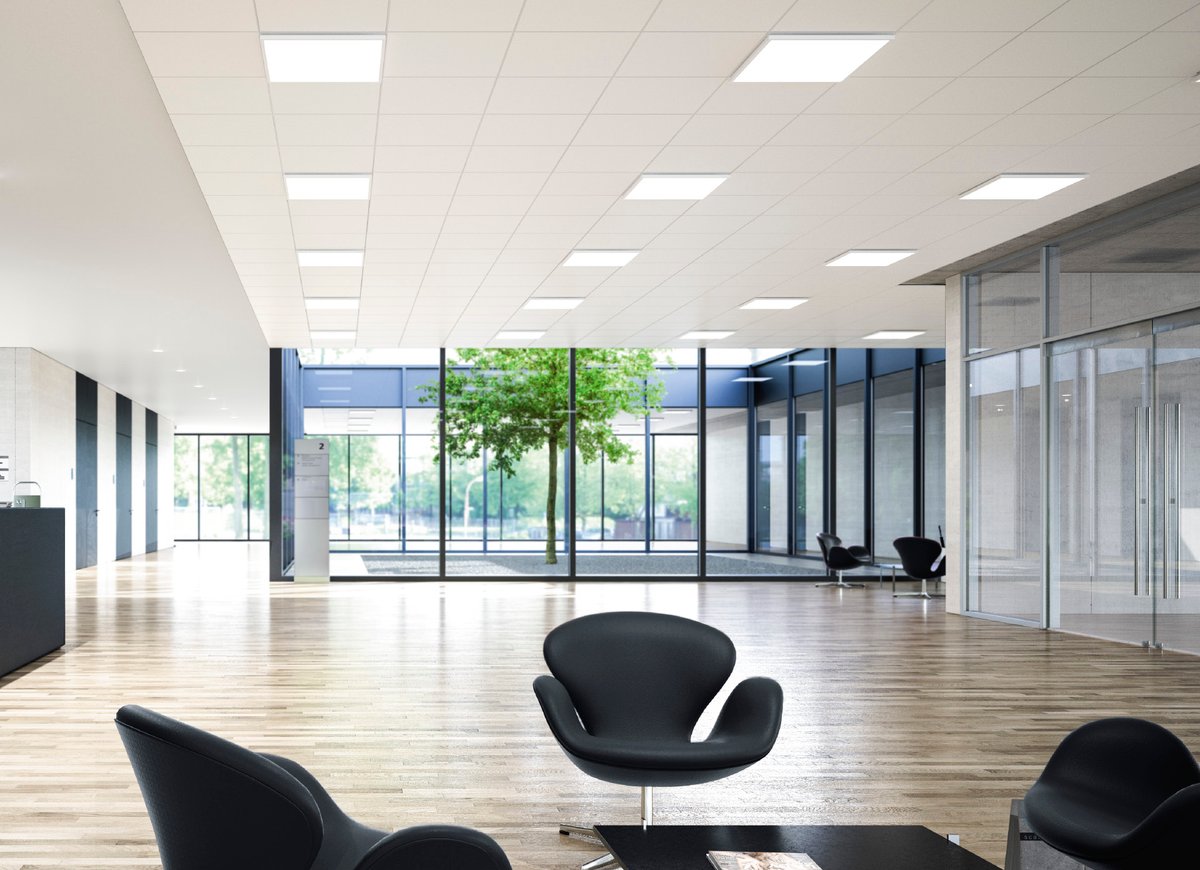Types of illumination
General information about illumination
In the 1950s, a basic classification of types of illumination was defined by the light planner Richard Kelly (1910 –1977):
General illumination – light to see Functional lighting – light to look at Accent lighting – light to behold
General illumination defines the environment and clarifies room situations. The light is soft and uniform. There are no hard shadows or contrasts. Outdoors, this type of illumination can be found in car parks, pathways and streets. According to the standard, a certain degree of illuminance must be reached here. Indoors, general illumination represents the background light, to be able to grasp the dimensions of a room.
Useful areas are illuminated with functional illumination. The light focuses on certain areas where increased attention is required by the user, for example on working surfaces, stairs and street junctions with pedestrian crossings. For functional illumination, formal requirements apply in most cases.
Accent lighting sets highlights and showcases objects and architectural features. This lighting should be significantly brighter than the general illumination in order to attract the attention of the viewer. However, this only works when the lighting accents are only used sparingly in the room, for example with objects, architectural details or individual wall surfaces.

General illumination
But what is considered to be good light?
People feel comfortable and safe in a well-illuminated environment. The spatial dimension is easy to comprehend. This requires gradations of light and dark, with no dazzling brightness, light overspill or complete darkness. Deliberately planned illumination allows the presence of dark areas, thus underlining its effect.
Particularly with architectural lighting, details show themselves to their best advantage with this illumination principle. Indoor and outdoor spaces can be structured using light zones. These illuminated areas model the spaces and create an arc of tension for the viewer. This principle is comparable with daylight. Illuminated and shaded areas in our environment help us to find our bearings and allow us to assess spatial dimensions quickly. We need this interplay of light and shade to provide orientation.
LED luminaires allow us to handle light like virtuosos. Precise reflectors, exactly calculated light emission and output classes to match the task in question offer many different design options. Specific areas can be illuminated and remodelled with light. Light is increasingly being used as an evocative element. Light can be used to place the focus on distinctive points in architecture or on landscape elements. Cityscapes, for example, can benefit from this. They can be given an unmistakable appearance. The important point here is to establish a visual connection between more strongly illuminated zones and their surroundings. The contrast here must not be too strong, in order to create a harmonious picture. This lighting methodology applies to both the outodoors and the indoors. Depending on the importance of landscape elements, structures or spaces, it is advisable to stagger the degree of illuminance used. Thus, the light suggests visual axes to the viewer and defines their surroundings. The clarification of the spatial situation creates a feeling of safety.
Functional illumination
Even more specific use of light is possible through control electronics. Depending on requirements, for example events in urban environments, the intensity or the colour of the light can easily be changed. Façades, objects and structures become stage backgrounds – or parks sparkle and shine and attract visitors with an increased degree of illuminance. Light marks special features and sends distinct signals. The ability of the light to change increases the attractiveness of the room.
Assuming that, in an area to be illuminated, there are enough light sources to be able to cover the sum of general lighting, functional lighting and lighting accents, an enormous effect can be achieved by changing the degree of illuminance of one of the elements of the sum. The lighting atmosphere can thus be changed, favourably as well as unfavourably. Here it is important to ensure that the differences in perceived light are not too great. For the eye, strong contrasts can mean adaptation work, and this can lead to fatigue.

Accent lighting
Nevertheless, it should be possible to make a clear distinction between the three types of illumination, for only the interplay between brightness and dark zones puts us in a position to find our way in an environment. A concrete numerical definition of the relationships between the types of illumination is only possible under laboratory conditions. In practice, many factors play a role, and this can change the effect of the room considerably.
The nature of the illuminated surfaces and their colour influence the reflection characteristics. Outdoors, weather conditions also have to be taken into consideration. Another aspect is that each person perceives light differently and therefore also reacts differently. Subjective feelings also play a role in the interplay between the individual types of illumination. When lighting is being installed, an on-site test should be carried out of what was previously planned through theoretical calculation.
